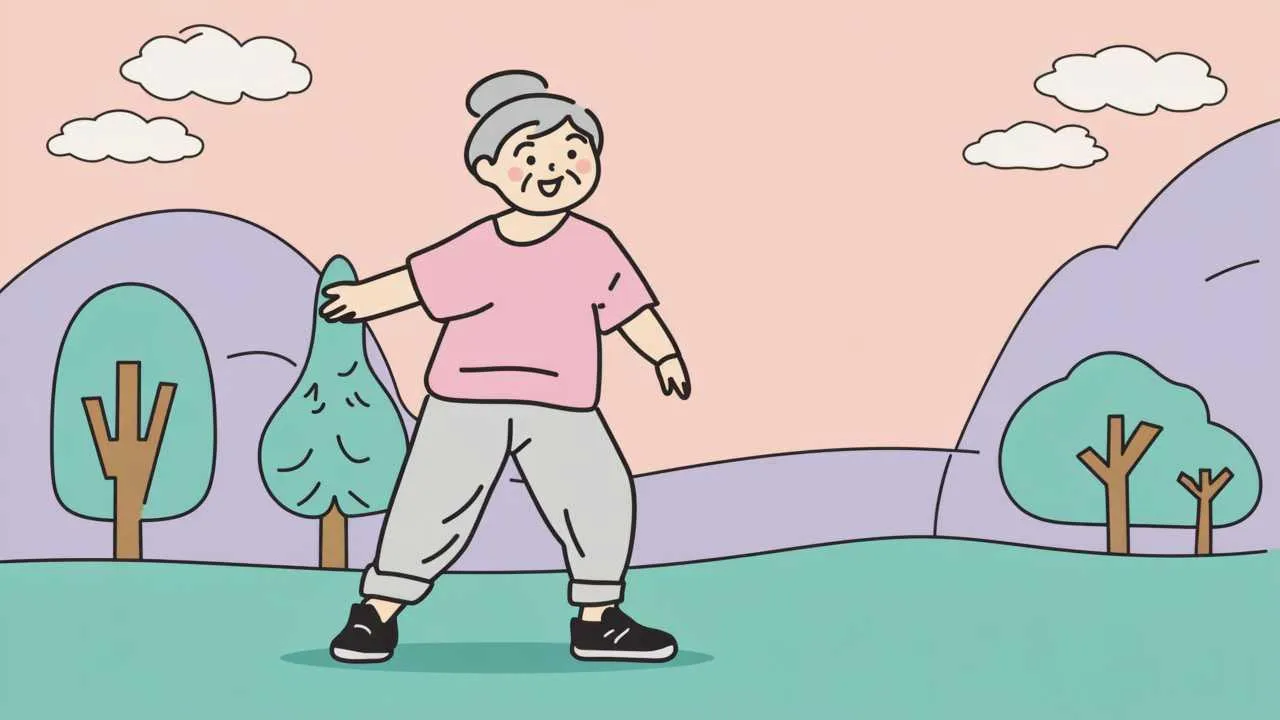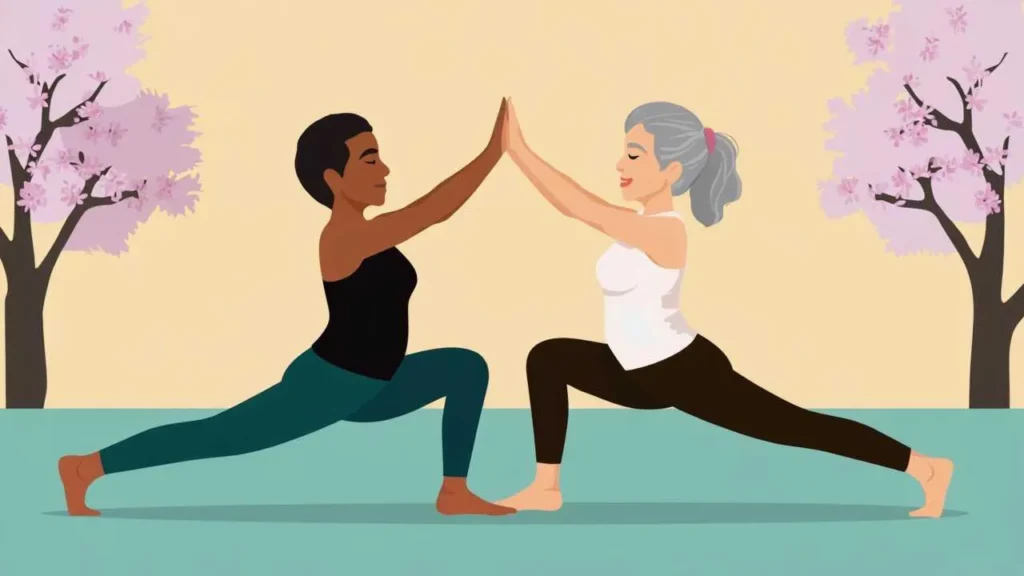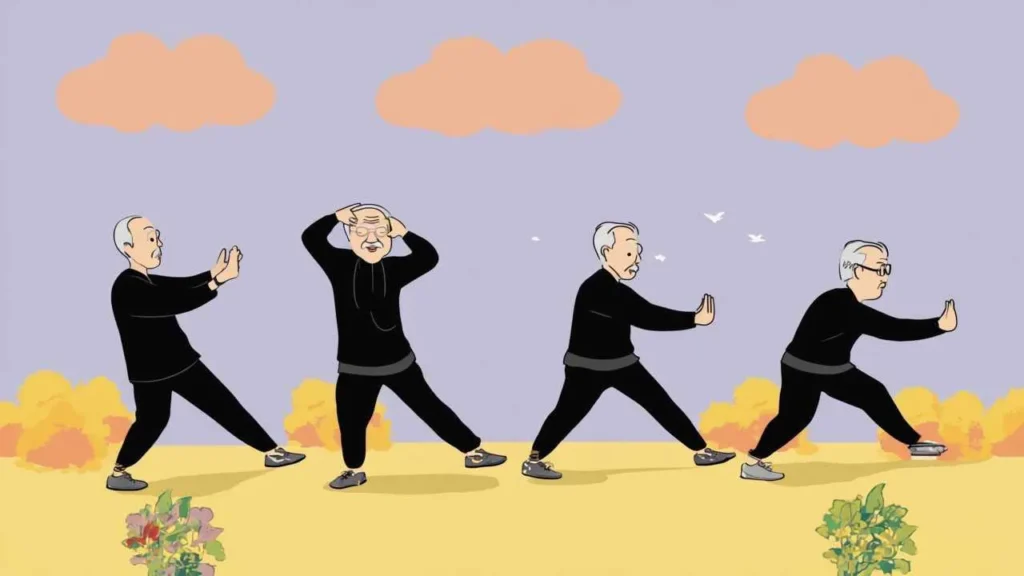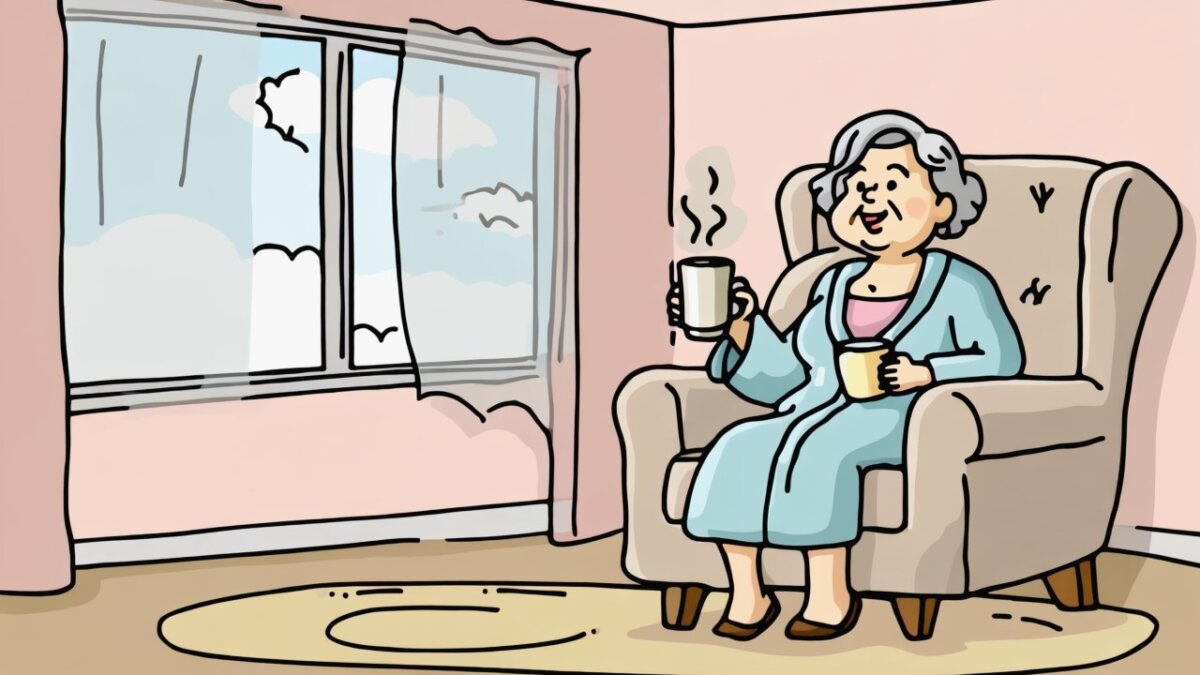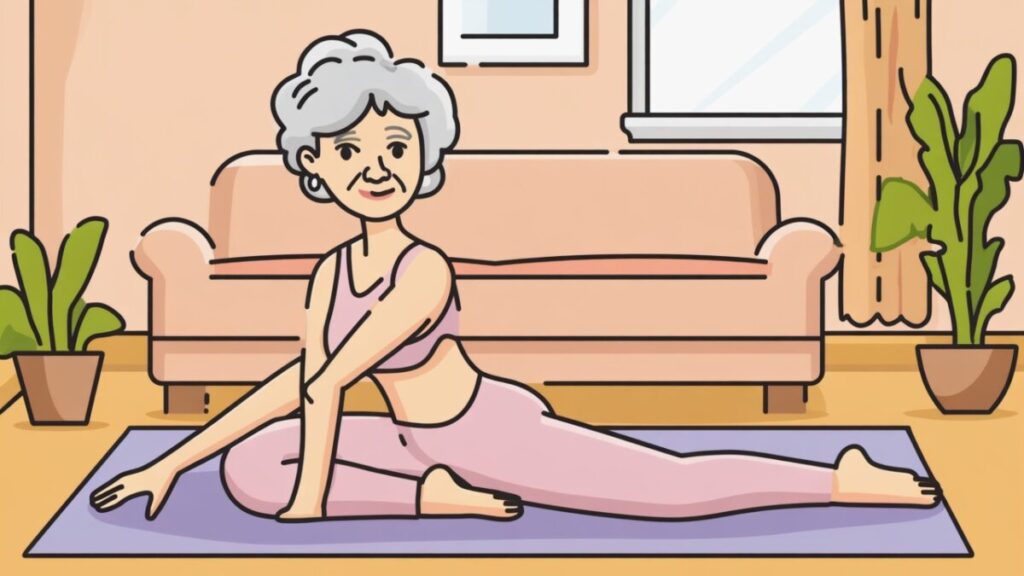
Starting over after 60 terrifies many people, yet research shows it often becomes the most fulfilling chapter of their lives. Whether you’re facing job loss, divorce, widowhood, relocation, financial setback, or simply feeling stuck in a life that no longer fits, the prospect of reinvention at this age triggers deep fears about time running out, diminished opportunities, and being “too old” for fresh starts. This comprehensive guide challenges those limiting beliefs with evidence, real stories, and practical frameworks for successful reinvention. You’ll discover why your 60s and 70s offer unique advantages for change that younger decades lack, how to navigate the psychology of late-life transitions, and concrete steps for building a next chapter aligned with who you’ve become rather than who you once were. Change after 60 isn’t just possible—for millions of seniors, it’s transformational.
Why Society Gets Late-Life Change Wrong
Popular culture peddles damaging myths about aging and change: that meaningful transformation belongs to the young, that personalities become fixed after middle age, that career changes or relationship renewals are desperate rather than courageous, and that contentment in later life means accepting decline rather than pursuing growth. These narratives aren’t just wrong—they’re contradicted by decades of psychological research and millions of lived experiences proving the opposite.
Developmental psychology once assumed personality solidified by 30, but longitudinal studies tracking people across lifespans reveal continued evolution well into 80s and beyond. The Baltimore Longitudinal Study of Aging, following participants since 1958, documents significant personality changes in later decades: increased agreeableness, emotional stability, and what researchers call “wisdom-related knowledge.” Far from becoming rigid, many people become more adaptable with age as they accumulate experiences navigating change successfully.
The “crisis” framing of major life changes after 60—whether divorce, career shift, or relocation—reveals ageist assumptions. When a 35-year-old changes careers, society celebrates “finding themselves.” When a 65-year-old makes the same choice, people worry about instability or irresponsibility. Yet research from Stanford Center on Longevity shows career transitions after 60 often reflect increased self-knowledge and clarity about priorities rather than confusion. You’re not having a crisis—you’re exercising hard-won wisdom about what matters.
Society particularly struggles with women starting over after 60. A woman leaving a long marriage, starting a business, or pursuing education faces scrutiny men escape. “What about your grandchildren?” people ask, as though personal growth and family connection are mutually exclusive. These gendered double standards reflect outdated expectations about women’s roles in later life, ignoring that longer lifespans create decades for multiple chapters beyond caretaking.
The most pernicious myth: that starting over after 60 means admitting failure. In reality, the opposite is true. Continuing in situations that no longer serve you—relationships that died years ago, careers providing paychecks but no fulfillment, living arrangements that worked for a different life stage—represents resignation, not success. Starting over demonstrates courage, self-awareness, and commitment to living authentically. Failure is spending your remaining decades pretending everything’s fine when it isn’t.
| Common Myth | Reality from Research | Why It Matters |
|---|---|---|
| “Too old to change” | Brain plasticity continues throughout life; learning ability remains strong | You can develop new skills and perspectives at any age |
| “Running out of time” | Life expectancy at 65 is 18-20 additional years—entire adult lifetime | You likely have 20+ years to build new chapter |
| “Should be settled by now” | Multiple career/relationship phases across lifespan is increasingly normal | Serial chapters reflect modern longevity, not instability |
| “Change is risky at this age” | Staying in wrong situation creates documented health risks | Status quo can be riskier than thoughtful change |
| “No one starts over after 60” | 25% of adults 60+ make major life changes; often unreported | You’re part of large, invisible community of reinventors |
| “People will judge you” | Most judgment comes from projection of others’ fears | Living authentically matters more than others’ opinions |
The Unique Advantages You Have Now
Starting over after 60 isn’t starting from scratch—it’s building on decades of accumulated wisdom, resources, and self-knowledge that younger people lack. Your age isn’t a disadvantage; it’s your competitive edge. Understanding these advantages helps you approach change strategically rather than defensively, leveraging strengths you’ve spent a lifetime developing.
Clarity About What Matters: By 60, you’ve experienced enough to distinguish essential from trivial, temporary from lasting, and authentic from performative. You know which relationships energize versus drain you, what work feels meaningful versus soul-crushing, and which sacrifices you’re willing to make. This clarity eliminates years of trial-and-error younger people endure. When starting over, you can design toward what you know works for you rather than experimenting blindly.
Financial Resources and Credit History: While not universal, many 60-somethings have accumulated assets—home equity, retirement accounts, Social Security eligibility—providing cushions unavailable to younger reinventors. Even modest savings represent security younger people lack. Your credit history spans decades, making loans and leases easier to obtain. You may qualify for senior-specific programs and discounts reducing costs of fresh starts. These resources don’t guarantee success, but they buffer against catastrophic failure.
Relationship and Professional Networks: Six decades of living creates extensive networks of former colleagues, friends, acquaintances, and community connections representing enormous social capital. When starting over, these networks provide: introductions opening doors, references validating your capabilities, emotional support during transitions, and practical assistance with logistics. Young people build networks from nothing; you activate existing ones accumulated across a lifetime.
Proven Resilience: You’ve survived recessions, job losses, health crises, relationship failures, family tragedies, and countless smaller setbacks. This track record proves you possess resilience—the ability to recover from adversity. When facing change after 60, you’re not wondering “can I handle this?”—you have evidence you can. Your history of overcoming challenges provides confidence younger people lack when facing their first major reinvention.
Freedom from Certain Obligations: Many 60-somethings enjoy freedoms unavailable earlier: children are typically independent, mortgages are paid or nearly so, career pressure to impress bosses has diminished, and caring what others think has declined. These freedoms create space for authentic choices rather than obligation-driven ones. You can pursue changes aligned with personal fulfillment rather than external expectations.
Emotional Regulation and Perspective: Research consistently shows emotional intelligence peaks in later decades. You experience emotions fully but are less likely to make impulsive decisions driven by temporary feelings. You understand that difficult periods pass, setbacks aren’t permanent, and situations often look different with time. This emotional maturity makes you better equipped to navigate the uncertainty and setbacks inherent in major life changes than you were at 30 or 40.
- Advantage of Experience: You’ve made mistakes and learned from them—this wisdom accelerates success in new ventures
- Advantage of Time Perspective: Understanding that “this too shall pass” helps you weather difficult transition periods
- Advantage of Self-Knowledge: Decades of self-observation reveal your authentic preferences, not what you think you should want
- Advantage of Reduced Fear: Having survived previous challenges reduces catastrophic thinking about future ones
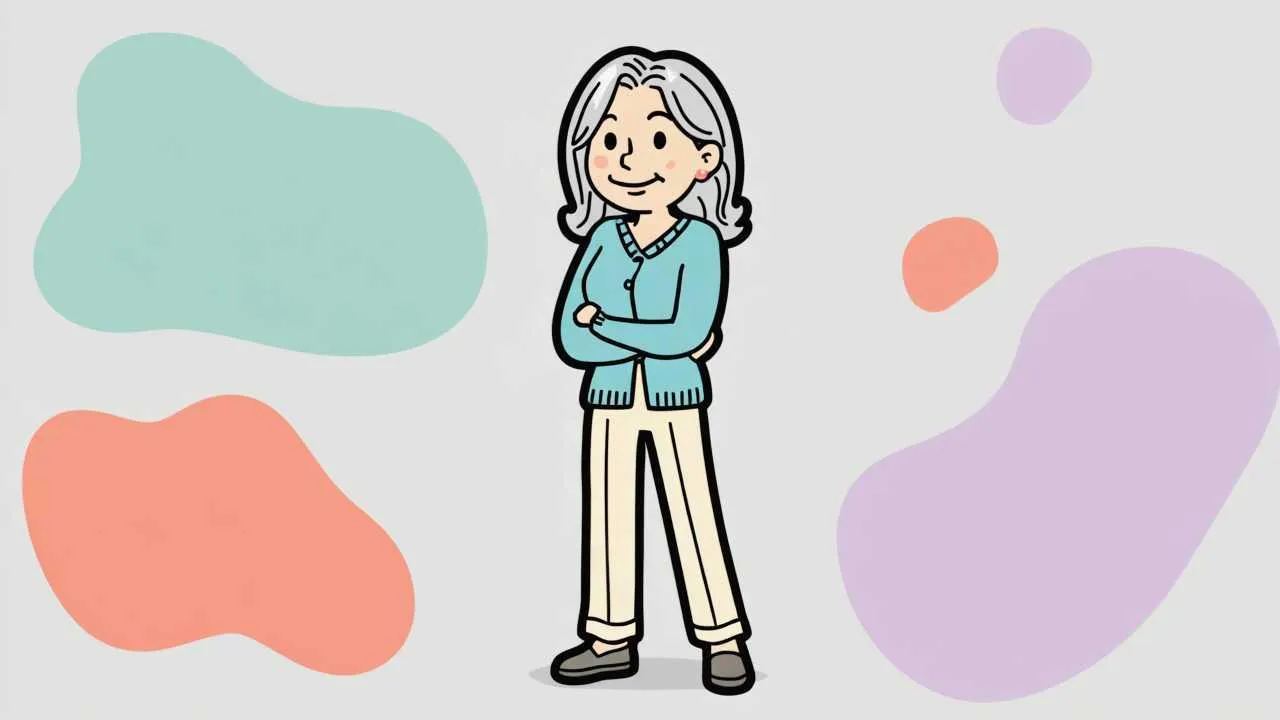
Common Triggers: Why People Start Over After 60
Understanding why people reinvent themselves after 60 helps normalize your own experience and identify which change category you’re navigating. While circumstances vary, most late-life reinventions cluster around several common triggers—some involuntary, others chosen, but all requiring similar navigation skills.
Involuntary Job Loss or Forced Retirement: Age discrimination, corporate restructuring, industry disruption, or health limitations force many from careers they’d planned to continue. This trigger feels particularly unfair—you weren’t ready to stop, but circumstances decided for you. The challenge here involves mourning lost identity while discovering what’s next. Many people initially seek similar roles, then gradually realize forced endings create opportunities to explore what they actually enjoy rather than what they’re credentialed for.
Divorce or Widowhood: Relationship endings—whether through death or divorce—fundamentally alter life structure. Married identity dissolves, coupled social circles often disappear, living situations change, and financial realities shift. Starting over here means rebuilding life as a single person, often after decades of partnership. The process involves rediscovering individual preferences separate from couple identity and creating new routines, social connections, and purpose independent of the relationship that defined previous decades.
Empty Nest or Caregiver Role Ending: When children launch or elderly parents pass away, the caregiver identity that structured years or decades suddenly ends. Many people, especially women, discover they’ve postponed personal dreams indefinitely while caring for others. The trigger isn’t loss of love—it’s liberation from constant responsibility, creating space to ask “what do I want?” Some feel guilty about relief accompanying these transitions. Starting over means giving yourself permission to prioritize personal fulfillment after years of prioritizing others.
Health Crisis or Mortality Awareness: Serious illness, death of peers, or simple awareness that “time is finite” motivates many to reassess how they’re spending remaining years. Health scares often create urgency: “if not now, when?” This trigger generates energy for change but requires balancing enthusiasm with practical health limitations. Starting over here means aligning daily life with values rather than continuing patterns established when mortality felt distant and abstract.
Geographic Dislocation: Retirement relocations, downsizing, moving near family, or escaping high costs force starting over in new communities without established support systems. Geographic change is particularly challenging because it compounds other transitions—you’re not just building a new life, you’re doing it among strangers. Success requires intentional community-building and accepting that deep friendships take years to develop, though satisfying social connections can emerge faster.
Voluntary “This Isn’t Working” Realizations: Some people wake up realizing their current life, while not terrible, doesn’t reflect who they’ve become or what they value. The marriage works on paper but lacks intimacy. The career pays well but feels meaningless. The lifestyle is comfortable but unstimulating. These voluntary changes are hardest to explain to others—everything looks fine externally, so why change? But internal misalignment creates slow-burning dissatisfaction that eventually becomes unbearable. Starting over here requires trusting your own assessment over others’ observations.
| Change Trigger | Unique Challenge | Primary Task | Timeline |
|---|---|---|---|
| Job Loss/Forced Retirement | Identity loss, wounded pride | Redefine self beyond career | 6-18 months to stabilize |
| Divorce/Widowhood | Rebuilding as single person | Create independent life structure | 1-3 years for adjustment |
| Empty Nest/Caregiver End | Permission to prioritize self | Discover personal desires | 3-12 months to clarify |
| Health Crisis | Balancing dreams with limitations | Align life with values urgently | Ongoing adjustment |
| Geographic Relocation | Building community from scratch | Establish new support network | 1-2 years to feel settled |
| Voluntary “Not Working” | Justifying change to others | Trust internal assessment | Varies widely |
The Psychology of Late-Life Transition
Major life changes after 60 follow predictable psychological patterns. Understanding these phases helps you recognize where you are in the process, what’s normal versus concerning, and what tools help at each stage. Transition isn’t linear—expect to move back and forth between phases—but awareness of the overall arc provides reassurance during difficult periods.
Phase 1: Ending (Letting Go): All transitions begin with endings—leaving jobs, relationships, identities, or situations that defined previous chapters. Psychologist William Bridges calls this the “neutral zone” before new beginnings emerge. This phase involves grief, even when change is chosen. You’re mourning not just what’s lost but who you were in that context. Common experiences include sadness, anger, confusion, relief (sometimes simultaneously), and identity disorientation. The task here isn’t rushing to “what’s next” but honoring what’s ending. Rituals help: creating memory books, writing goodbye letters (sent or not), holding closure ceremonies, or simply sitting with feelings rather than suppressing them.
Phase 2: Neutral Zone (Wilderness): After endings but before new beginnings solidify, you enter what feels like wilderness—the old life is gone but the new one hasn’t crystallized. This disorienting phase can last months or years. You might try multiple directions, change your mind repeatedly, or feel paralyzed by options. Depression, anxiety, and existential questioning peak during this phase. Many people panic, believing something’s wrong because they haven’t figured it out yet. Actually, this exploration is the work—testing possibilities, discovering what doesn’t fit, gradually clarifying what does. The task is tolerating ambiguity while experimenting, resisting pressure to commit prematurely just to end uncertainty.
Phase 3: New Beginning (Integration): Gradually, new patterns, identities, and structures emerge. This phase feels qualitatively different—energy returns, decisions become clearer, and new life starts feeling like “yours” rather than temporary experiment. Integration doesn’t mean everything’s perfect or uncertainty disappears entirely, but you’ve created sustainable new normal aligned with current self. The task here involves commitment—investing fully in new chapter rather than hedging bets by maintaining escape routes back to old life.
Emotional Challenges Specific to 60+: Late-life transitions carry emotional loads younger reinventors don’t face. Fear of running out of time creates urgency that can lead to poor decisions. Shame about “not having it figured out by now” adds unnecessary self-judgment. Awareness that this might be your last major reinvention raises stakes. Comparison to peers who seem settled triggers inadequacy. Grief isn’t just about what’s ending but accumulated losses across lifetime. These additional layers require extra self-compassion—you’re not just navigating practical changes but processing decades of experience and confronting mortality.
Support Needs During Transition: Different phases require different support. During endings, you need people who allow grief without rushing you to move on. In the neutral zone, you need companions comfortable with ambiguity who won’t pressure premature decisions. During new beginnings, you need cheerleaders celebrating progress and helping you commit. Identify which phase you’re in and seek appropriate support. Therapy, coaching, support groups for specific transitions (divorce after 60, career change, widowhood), and trusted friends who’ve navigated similar changes all serve different purposes.
- Normal: Feeling lost, uncertain, scared, excited, relieved, and confused simultaneously
- Normal: Taking 1-3 years to feel settled in major transitions
- Normal: Questioning your decision repeatedly during the neutral zone
- Normal: Grieving even when change was your choice
- Concerning: Suicidal ideation, inability to function for months, complete social withdrawal—seek professional help
- Concerning: Self-medication with alcohol or drugs to manage transition stress
Practical Strategies for Successful Reinvention
Understanding psychology helps, but successful starting over requires concrete strategies. These aren’t theoretical concepts—they’re battle-tested approaches from people who’ve successfully reinvented themselves after 60. Not every strategy applies to every situation, but building your personal toolkit from these options increases success likelihood.
Start with Experiments, Not Commitments: The biggest mistake in late-life reinvention is making premature binding decisions. Don’t immediately sell your house, quit your job without a plan, or move across the country. Instead, design low-risk experiments testing possibilities. Want to live in a new city? Rent for six months before buying. Considering a career change? Volunteer or freelance in that field part-time first. Thinking about solo living after divorce? Try a short-term lease before committing. Experiments provide real-world data about whether fantasies match realities, saving you from expensive mistakes.
Protect Your Financial Foundation: Change consumes resources—emotional, social, and financial. Secure your financial baseline before making major moves. This might mean working longer than preferred to build cushion, living below means during transitions, or accepting temporary compromises. Financial stress amplifies every other challenge, while financial security provides freedom to make choices aligned with values rather than desperation. Consult financial advisors specializing in retirement transitions before major decisions affecting assets, income, or long-term security.
Build Transition Communities: Isolation during major life changes predicts poor outcomes. Intentionally build communities supporting your transition. Join groups specific to your change: divorce support groups for seniors, career transition workshops, newcomer clubs in new cities, or online communities for specific reinventions. These transition-specific communities understand your experience in ways general friends, who mean well but haven’t lived it, cannot. Supplement rather than replace existing friendships, but recognize that some relationships won’t survive your evolution—and that’s okay.
Honor Grief While Moving Forward: Don’t choose between grieving losses and building new life—do both simultaneously. Create specific times and rituals for processing grief (journaling, therapy, memorials, conversations with trusted friends) while also taking concrete actions toward new chapter (exploring interests, meeting new people, trying new activities). Grief that’s suppressed leaks out in destructive ways, but dwelling exclusively in grief prevents forward movement. The balance is dynamic and personal, but both processes are essential.
Embrace “Both/And” Thinking: Resist binary thinking that forces false choices. You can honor your past while building different future. You can feel grateful for what was while acknowledging it’s no longer right. You can love people while recognizing relationships need to end. You can feel scared and move forward anyway. Much suffering in transitions comes from believing you must choose one feeling, one identity, one path, when actually you contain multitudes. Both/and thinking reduces internal conflict and expands possibilities.
Develop Identity Flexibility: Starting over requires loosening attachment to former identities while building new ones. If you’ve been “John’s wife” for 40 years, who are you as single person? If you’ve been “the accountant” since college, who are you without that career? Identity work—exploring “who am I becoming?” rather than clinging to “who I was”—is core transition work. Journaling, therapy, trying new activities, and spending time with diverse people all support identity exploration. Give yourself permission for answers to evolve rather than forcing premature definition.
| Strategy | How to Implement | Expected Outcome |
|---|---|---|
| Low-Risk Experiments | Test ideas for 30-90 days before major commitments | Reality-check fantasies, reduce costly mistakes |
| Financial Foundation | Build 6-12 month cushion before major changes | Reduced stress, freedom to make authentic choices |
| Transition Communities | Join 2-3 groups specific to your change type | Reduced isolation, practical guidance, emotional support |
| Honor Grief | Schedule specific times for processing losses | Healthier emotional processing, less suppression |
| Both/And Thinking | Journal about contradictions without forcing resolution | Reduced internal conflict, expanded possibilities |
| Identity Flexibility | Try new activities, meet diverse people, explore interests | Gradual clarity about emerging self |

Visual Art by Artani Paris
Real Stories: Seniors Who Started Over Successfully
Case Study 1: Portland, Oregon
Sandra Williams (64 years old) – Divorced After 38-Year Marriage
Sandra’s husband filed for divorce unexpectedly at age 62, shattering her identity as wife, homemaker, and partner. They’d married young; she’d never lived alone or managed finances independently. The first year was devastating—she described feeling like “the floor disappeared.” Friends from her married life gradually faded, unable to navigate her new single status comfortably.
Rather than rushing into new relationship or moving near her adult children (who suggested it), Sandra gave herself two years to discover who she was outside marriage. She rented a small apartment, took a part-time job at a bookstore (always her dream), joined a divorce support group for seniors, and started therapy. She tried activities she’d been curious about: pottery, book club, volunteering at animal shelter, hiking groups.
The breakthrough came 18 months in when she realized she enjoyed living alone—a surprise given her fear of loneliness. She discovered preferences suppressed during marriage: quiet mornings, spontaneous decisions, decorating her own way. At 64, she’s building life centered on her authentic interests rather than coupled compromise.
Results After 2 Years:
- Created satisfying social circle of single women friends who understand her experience
- Manages finances confidently after taking community college financial literacy course
- Reports higher life satisfaction now than during last decade of marriage
- Pursuing pottery seriously—first solo art show scheduled at local gallery
- Open to future relationship but from position of wholeness, not neediness
“The divorce destroyed the life I knew, but it created space for me to discover who I actually am. I wouldn’t have chosen this path, but I’m grateful for who I’m becoming. At 64, I’m finally meeting myself.” – Sandra Williams
Case Study 2: Asheville, North Carolina
Marcus Thompson (67 years old) – Career Reinvention After Layoff
Marcus spent 35 years as corporate IT manager before being laid off at 65 during company restructuring. Despite strong performance reviews, he was “too expensive” and “not a cultural fit” with younger team—thinly veiled age discrimination he couldn’t prove legally. Job searches revealed brutal reality: dozens of applications, zero interviews, and clear message he was unemployable in his field at 65.
After six months of frustration and depression, Marcus reframed his situation. Rather than seeking another corporate role, he identified what he actually enjoyed about his career: teaching less technical colleagues, solving complex problems, and mentoring. He started offering tech consulting to small businesses and nonprofits—organizations that couldn’t afford IT staff but needed expertise.
Marcus built his practice slowly through word-of-mouth, church connections, and local small business associations. He charges less than big consulting firms but more than he earned hourly in corporate work. Most importantly, he works 20-25 hours weekly on his schedule, choosing clients whose missions he supports.
Results After 18 Months:
- Earning 70% of former salary working half the hours—adequate for his retirement needs
- Serves 12 regular clients (small businesses, nonprofits, churches)
- Reports dramatically lower stress without corporate politics and ageism
- Finds work more meaningful serving community organizations than Fortune 500 clients
- Plans to continue consulting into 70s as long as he enjoys it
- Mentors three younger IT professionals—gives him satisfaction his corporate role never provided
“Getting laid off felt like the end. Turns out it was liberation. I was so focused on staying employed I never asked if I wanted that job. Now I work on my terms, with people I respect, doing work that matters. I wish I’d made this change years ago.” – Marcus Thompson
Case Study 3: Sarasota, Florida
Patricia and John Chen (both 69) – Relocated After Children Launched
The Chens spent 40 years in Minneapolis, raising three children and building careers—Patricia as nurse, John as high school teacher. When their youngest graduated college and they’d both retired, they faced question: stay in Minneapolis near adult children or fulfill long-held dream of living in warmer climate? Guilt about “abandoning” children (who were 30, 32, and 35) paralyzed them for two years.
Finally, they recognized staying solely for grown children wasn’t sustainable—resentment would build, and their children had own busy lives anyway. They sold their Minneapolis home, bought a modest condo in Sarasota, and committed to visiting children quarterly while welcoming them to Florida. The first year was harder than expected: they missed grandchildren daily, felt guilty about not being available for babysitting, and struggled building social connections in new community.
Gradually, patterns emerged. They joined pickleball leagues, volunteered at local theater, took community college classes, and connected with other retirees. Their relationships with adult children evolved—fewer casual drop-bys but more intentional quality time during visits. Grandchildren loved Florida vacations. Patricia and John discovered interests they’d had no time for during working/parenting years.
Results After 3 Years:
- Built satisfying social community through shared activities and volunteering
- Maintain strong relationships with children through video calls and planned visits
- Report better health due to year-round outdoor activity and reduced winter stress
- Pursuing interests (theater for Patricia, photography for John) dormant during working years
- Adult children initially upset but now supportive, recognizing their parents’ right to own lives
- No regrets about relocation—would make same choice again
“We almost didn’t move because we felt selfish. But staying purely for adult children would have bred resentment. Moving taught our children important lesson: retirement is your time for your priorities. They respect us more, not less, for choosing ourselves.” – Patricia Chen
Frequently Asked Questions
How do I know if I’m making a smart change versus running away from problems?
The distinction lies in whether you’re moving toward something or away from something. Running away means you’re primarily escaping discomfort without clear vision of what you want instead—this often leads to recreating similar problems in new contexts. Smart change involves both: acknowledging what isn’t working AND having emerging clarity about what would work better. Test this by asking: “If I make this change, what am I moving toward?” If you can articulate positive vision beyond “not being in current situation,” you’re likely making thoughtful change. If your only answer is escaping pain, slow down and develop clearer direction first. Consider working with a therapist or coach to distinguish healthy growth from avoidance patterns.
What if I start over and it doesn’t work out? I can’t afford to fail at this age.
This fear keeps many people stuck in unsatisfying situations. Reality: you can survive “failure” at 60+ just as you survived setbacks earlier in life—you have evidence of resilience from past challenges. Strategies to reduce risk: start with reversible experiments rather than irreversible commitments, maintain financial cushion providing security during transitions, build support systems before making major changes, and define “success” realistically rather than perfectionist. Most importantly, reframe “failure”—trying something that doesn’t work provides valuable information guiding better choices. The real failure is spending remaining decades in situations that don’t serve you because you’re paralyzed by fear of imperfection. Consult trusted advisors before major decisions, but don’t let fear of outcomes you can handle prevent living authentically.
My family thinks I’m crazy for wanting to start over. How do I handle their resistance?
Family resistance often reflects their anxiety rather than your actual capabilities. They may fear: losing their version of you, having to adjust to your changes, or confronting their own unlived lives. Strategies: communicate your thinking process so they understand you’re being thoughtful, not impulsive; set boundaries around unsolicited advice while staying open to genuine concerns; recognize you may need to proceed despite disapproval if you’ve genuinely considered their input; find support outside family who encourage your growth; give them time to adjust—many resistant family members eventually come around after seeing you thrive. Remember: you’re not asking permission to live your life, you’re informing them of your decisions. If family relationships are genuinely supportive overall, most will adapt once they see you’re committed and thriving. If relationships are controlling, this may reveal existing dynamics requiring attention.
How long should I expect major life transitions to take before I feel settled?
Research on life transitions suggests 1-3 years for major changes, though this varies by: type of change (career shifts often faster than relationship transitions), your support systems (strong networks accelerate adjustment), complexity (multiple simultaneous changes take longer), and personal resilience factors. Markers of being “settled”: you’re making decisions from new identity rather than old one, energy has returned to normal levels, you’ve established routines and community in new life, grief about endings has softened though not disappeared, and you’re investing fully rather than hedging bets. Don’t rush this—premature closure prevents adequate exploration. Equally, don’t stay indefinitely in exploration phase when commitment would serve you. If you’re still feeling completely unsettled after 3+ years, consider whether you’re avoiding commitment or need professional support addressing underlying blocks.
Is starting over just a distraction from depression or legitimate personal growth?
This is a crucial distinction requiring honest self-assessment. Depression signals: changes feel compulsive rather than considered, you’re escaping rather than moving toward, nothing satisfies you regardless of circumstances, changes don’t improve mood sustainably, and you’re isolating from support systems. Legitimate growth signals: changes align with longstanding values, you’ve considered pros and cons thoughtfully, mood improves when taking meaningful action toward changes, you’re building rather than burning bridges, and trusted people see your increased wellbeing. The two can coexist—depression can trigger awareness that current life isn’t working, sparking legitimate desire for change. If unsure, consult mental health professional before major decisions. Treating underlying depression doesn’t mean staying in situations that aren’t working; it means addressing mood disorders while thoughtfully reshaping your life. Both/and, not either/or.
What if I don’t know what I want—I just know my current life isn’t it?
This is completely normal during transitions and actually represents self-awareness, not confusion. Knowing what’s wrong is the first step; clarity about what’s right emerges through experimentation, not analysis. Strategies: try activities you’re curious about without committing to them becoming “your thing,” spend time with people living lives that intrigue you, journal about moments you feel energized versus depleted, notice what you’re drawn to rather than what you “should” want, and give yourself permission to explore without forcing premature conclusions. Many people waste years waiting for lightning-bolt clarity when actually, clarity emerges from action. Your task isn’t figuring it all out before moving; it’s taking small steps toward what interests you, gathering data about what works, and iterating. Ambiguity tolerance is the skill to develop here—comfort with not knowing while continuing to explore.
Can I start over if I have limited money and can’t afford to take risks?
Financial constraints require more creativity but don’t prevent reinvention. Strategies: focus on low-cost or free changes first (social circles, daily routines, volunteer work, hobbies, education through libraries or community colleges), make changes incrementally rather than all at once, research assistance programs for specific goals (job training, education grants, housing assistance), leverage assets you do have (skills, time, networks, home equity if applicable), and consider changes that improve finances rather than consuming resources (downsizing, geographic moves to cheaper areas, skills development for income generation). Some of the most successful reinventions come from financial constraints forcing creative solutions rather than expensive but superficial changes. Not having money to “buy” a new life often leads to more authentic transformation than having resources to escape through consumption. Connect with Area Agencies on Aging or nonprofit career counselors for free guidance on reinvention with limited resources.
How do I build new social connections when starting over after 60?
Social connection requires intentional effort and patience—deep friendships take 200+ hours of interaction according to friendship research. Strategies: join activity-based groups (not just social groups) where repeated contact happens naturally, volunteer for causes you care about, take classes or workshops creating regular interaction, say yes to invitations even when you don’t feel like it initially, host small gatherings inviting acquaintances to deepen connections, be vulnerable and authentic rather than putting on social performance, and recognize that quantity of connections matters less than quality. Many people report their 60s friendships feel more authentic than earlier decades because they’re choosing based on genuine compatibility rather than proximity or obligation. Give relationships 6-12 months to develop before deciding they won’t work—initial awkwardness doesn’t predict long-term potential. Senior centers, faith communities, hobby groups, and volunteering provide richest friendship opportunities for many.
What if starting over means leaving behind my entire support system?
This represents one of the hardest aspects of some reinventions—particularly geographic moves or leaving communities tied to old identity (church, work colleagues, couple friends after divorce). You’re facing real loss requiring mourning. Strategies to maintain supports while building new ones: use technology maintaining distant relationships (video calls, messaging, visits), identify which relationships are portable and invest heavily in those, build new supports before completely leaving old ones when possible, recognize some relationships may not survive transition but new ones will emerge, and create transition community of people navigating similar changes even if they’re not permanent friend group. You cannot simultaneously hold onto everything old while building something new—some loss is inherent in growth. The question isn’t avoiding loss but ensuring you’re building adequate new supports while grieving losses. Therapy or coaching specifically focused on transitions can provide professional support bridging old and new.
How do I maintain hope when the transition feels endlessly difficult?
Difficult transitions test resolve and hope, especially during the middle “wilderness” phase when old life is gone but new one hasn’t gelled. Hope-maintaining strategies: connect with others who’ve successfully navigated similar transitions (proof it’s possible), document small wins and progress even when big picture feels stalled, remember past challenges you’ve survived (evidence of your resilience), identify what is working rather than fixating on what isn’t, seek professional support when feeling overwhelmed (therapy, coaching, support groups), practice self-compassion rather than self-criticism about struggle, and recognize that difficulty doesn’t mean you made wrong choice—meaningful change is inherently challenging. Sometimes “maintaining hope” means simply continuing to show up for your life even when you don’t feel hopeful, trusting that feelings lag behind actions. Many people describe their transitions as desperately hard in the middle but couldn’t imagine returning to old life once through it. The difficulty is part of the transformation, not evidence of failure.
Your 60-Day Starting Over Action Plan
- Days 1-10: Reality Assessment – Honestly evaluate your current situation without judgment. Journal about what’s working and what isn’t. Identify which trigger category you’re in (involuntary job loss, relationship ending, voluntary change, etc.). List resources you have (financial, social, skills, health). Acknowledge what you’re afraid of. Share assessment with trusted friend or therapist. This foundation prevents reactive decisions.
- Days 11-20: Vision Exploration – Without censoring or committing, explore what you’re drawn toward. Complete exercises: “If money/age weren’t issues, how would I spend my days?”, “What did I love doing before responsibilities took over?”, “Who do I admire and why?”, “What do I want to be remembered for?” Research people who’ve made similar changes—read blogs, memoirs, join online communities. You’re not deciding yet, just gathering possibilities.
- Days 21-30: Stakeholder Conversations – Have honest conversations with people affected by potential changes (spouse, children, close friends, financial advisor if applicable). Frame as exploratory: “I’m considering… what concerns you?” Listen without defending. Their input matters but isn’t veto power. Identify who supports your growth versus whose resistance reflects their issues. Build team of supporters for what’s ahead.
- Days 31-40: Small Experiments Begin – Design three low-risk experiments testing directions that intrigue you. If considering relocation, visit for extended stay. If exploring career change, volunteer in that field. If contemplating relationship status change, join relevant support group. Experiments provide reality-checks preventing expensive mistakes while building confidence through small wins. Track what you learn.
- Days 41-50: Support System Building – Intentionally build infrastructure supporting transition. Join support group specific to your change type. Start therapy or coaching if helpful. Identify transition mentor—someone who’s successfully navigated similar change. Create simple self-care practices maintaining stability during disruption. Line up practical help (financial advisor, attorney, career counselor) you might need. Don’t try to do this alone.
- Days 51-60: Initial Decisions and Timeline – Based on first 50 days, make initial (still reversible) decisions. If experiments felt right, commit to next level. If they revealed problems, pivot to other possibilities. Create realistic timeline for major changes accounting for financial, emotional, and practical realities. Identify which decisions are time-sensitive versus which benefit from more exploration. Share plans with support team. Schedule check-in with yourself in 90 days to assess and adjust.
Disclaimer
This article provides general information about life transitions and personal growth. It does not constitute psychological counseling, financial advice, legal guidance, or medical recommendations. Every individual’s circumstances, resources, and needs are unique. Major life decisions—including relationship changes, career transitions, relocations, or financial commitments—should be made in consultation with qualified professionals as appropriate: therapists, financial advisors, attorneys, or medical providers. If you’re experiencing depression, anxiety, or thoughts of self-harm during transitions, please seek immediate professional mental health support.
Published: October 17, 2025. Content reflects general transition principles but individual experiences vary significantly.
Related Articles
- How to Stay Valuable When AI Changes Everything? 2025 Guide for Seniors
- How Seniors Can Build a Balanced Routine at Home: Complete Daily Guide
Updated October 2025
